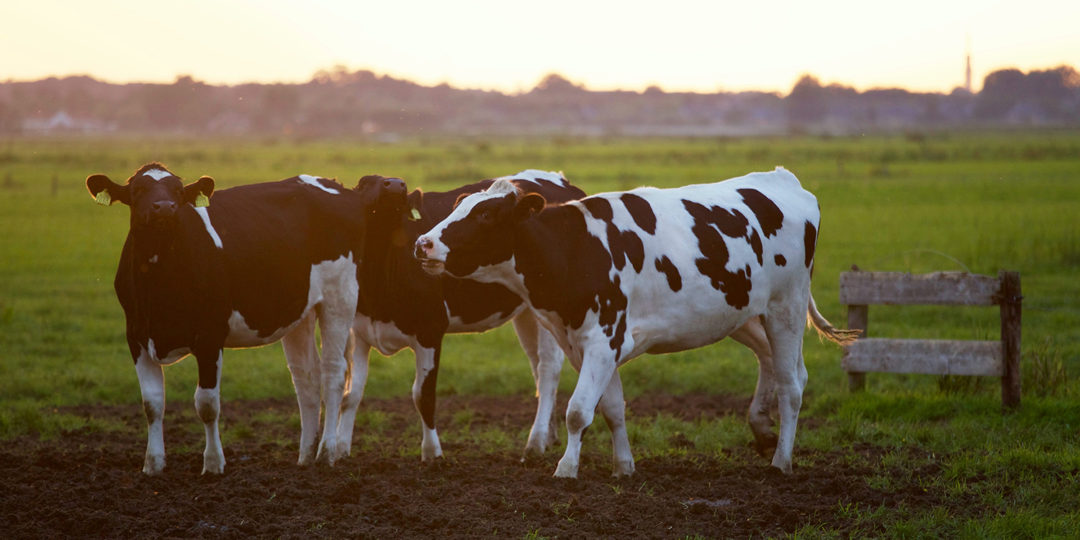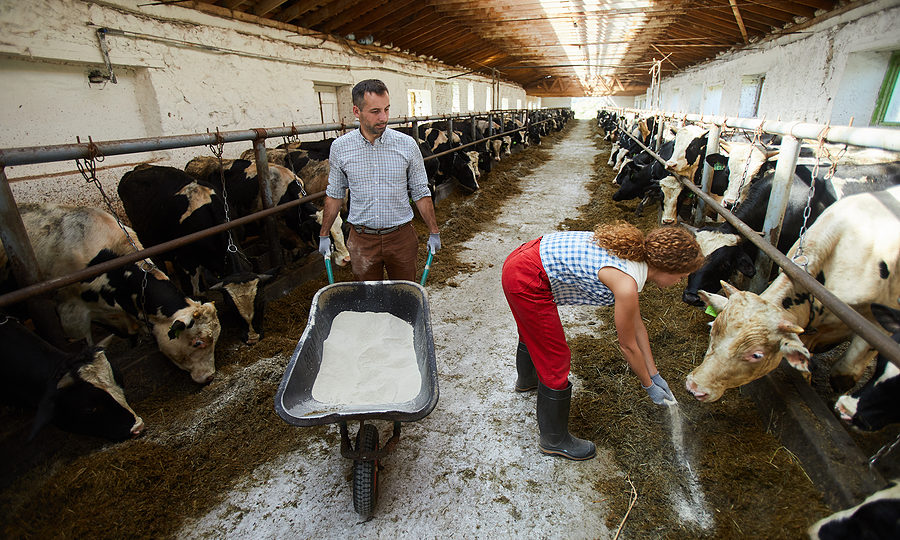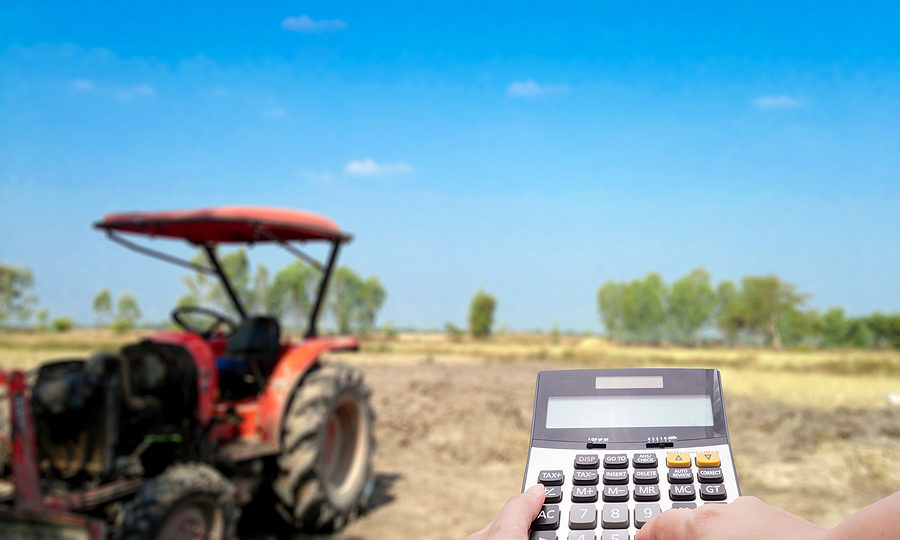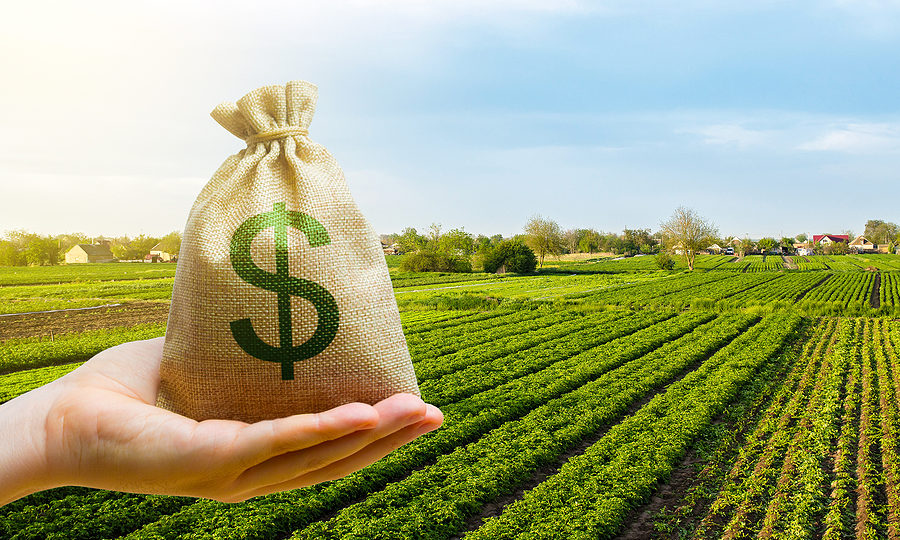-
Guide to Understanding Farm Depreciation for Your Dairy Farm
- Jun 13, 2023
- By Genske, Mulder & Company
- In Uncategorized
- Comments Off on Guide to Understanding Farm Depreciation for Your Dairy Farm
Farm depreciation is a critical element of farm accounting—a deduction that favorably minimizes taxable income for farmers. According to the IRS, farm depreciation is one of the most significant tax deductions farmers qualify for. This makes it essential for farmers to understand and know how it’s appropriately navigated.
Assets that we buy and intend to use for many years in the future will generally experience a reduction in value, known as depreciation, over time. This is especially true for mechanical assets and farm equipment, such as trucks, tractors, combine harvesters, etc.
Farmers often need to understand this accounting aspect, and confusion about how it works is common. The tax code offers three methods of deducting farm purchases, depreciation, Section 179, and bonus depreciation. Let’s break it down.
Farm Depreciation: Spreading the Cost Over Time
Depreciation allows you to deduct the cost of your assets over their useful lives. It recognizes wear and tear, obsolescence, and deterioration that assets undergo as you use them in farming operations. By spreading the cost of assets over time, depreciation offers a more accurate representation of their value, helping you allocate expenses effectively.
The straight-line method evenly distributes an asset’s cost over its estimated useful life. For instance, if, after an assessment, a certified accountant determines a piece of machinery will be productive for ten years and cost $100,000, the annual depreciation expense would be $10,000.
Section 179: Immediate Expense Deduction
Section 179 lets you deduct the total cost of qualifying assets in the year you placed them into service. This provision benefits smaller farms that make significant purchases in a given tax year. You can minimize your taxable income for that year by deducting the entire asset cost upfront.
The government sets limits to the amount you can deduct. If the limit is $500,000, a farmer who purchases a tractor for $200,000 can deduct the entire amount under Section 179 and reduce their taxable income by $200,000.
In 2023, you can fully deduct up to $1.16 million if the assets you bought cost more than $2.89 million. If you exceed this figure, prepare to reduce your deduction dollar-for-dollar.
The maximum Section 179 deduction typically equals your net farm income and wages. You can carry the excess amount to the next year and deduct it against your farm income that year. Remember that your farm buildings don’t qualify for Section 179.
Bonus Depreciation: Accelerated Deductions
Bonus depreciation allows you to deduct a percentage of the cost of qualifying assets in addition to regular depreciation. The bonus depreciation rate can vary, but it is often higher in the early years of an asset’s life. Bonus depreciation is ideal for new acquisitions and offers significant tax benefits.
Remember that bonus depreciation can result in a net operating loss, which you can carry forward or back two years. Besides, you can select from bonus depreciation on a class-life basis.
It is always helpful to consult with tax professionals to understand the specific rules and ensure compliance with the tax code.
Choosing the Right Method for Your Farm
Consider your circumstances and goals before selecting an ideal method for deducting farm purchases. Smaller farms with limited cash flow may benefit more from Section 179, as it lets you immediately minus the total cost of qualifying assets. This approach offers immediate tax relief and helps with cash flow management.
On the other hand, larger farms with higher taxable incomes may find regular depreciation more beneficial. Spreading the assets’ costs over their useful lives provides a more accurate reflection of their value and help with long-term financial planning.
Farmers also need to consider the assets they are purchasing. Certain assets like equipment and machinery may be eligible for bonus depreciation, providing additional tax savings.
Consulting with a Tax Professional
Given the complexity of farm depreciation, consulting with a tax professional specializing in agricultural taxation is highly recommended. These professionals have the expertise and knowledge to guide you in selecting the most advantageous depreciation method for your specific circumstances.
Contact Genske, Mulder & Company, LLP to get the services of a professional partner and CPA who’ll help you navigate the ever-changing tax laws and regulations that may impact depreciation deductions.
-
Understanding the Significance of Setting Up a Farm Trust
- Jun 13, 2023
- By Genske, Mulder & Company
- In Uncategorized
- Comments Off on Understanding the Significance of Setting Up a Farm Trust
The farming landscape undergoes constant change, with challenges arising from various facets such as market dynamics, technological advancements, and shifting property laws. An increasing concern for farmers is the transition of their farms to the next generation while preserving the farm’s value and integrity. Here’s where the concept of farm trust steps in.
Farm trusts, acting as legal arrangements allowing for the hold of assets by one party to benefit another, have emerged as an effective tool in the arsenal of farm succession planning. Informing oneself about setting up a farm trust can secure the future of the farm and family enterprise.
Safeguarding Assets and Ensuring Continuity with a Farm Trust
One of the most important aspects of farm trusts is their capability to protect assets. In the event of legal conflicts or debts, assets kept in a trust can be safeguarded from claims. Trusts can be set up to allow the farm operations to continue unabated even if the owner passes away, significantly reducing the risk of sudden disruptions in a farm’s income stream.
Navigating Family Dynamics and Clear Succession
Farm trusts also provide a way to address potentially complicated family dynamics. Farms often hold not just economic value but emotional value too. Creating a farm trust helps lay the foundation for a clear farm succession plan, managing the transfer of assets to the younger generations, and preventing potential family disputes.
Customization and Flexibility
One of the most enticing aspects of arranging a farm trust is its flexibility. Every trust can be tailored according to the individual needs of a specific farm and family. Whether your concern lies with minimizing estate taxes, ensuring the care of a family member, or preserving land for future generations, structuring a farm trust can prove significantly helpful.
Setting up a farm trust is a complex process. It requires careful consideration of various factors, like the type of trust that best suits your purpose, the specifics of your farm, and your plans. Moreover, it also calls for professional guidance.
Embracing Professional Guidance
Farm succession planning can be emotionally challenging and technically complex. Therefore, partaking advice from professionals such as attorneys or financial advisors familiar with the nuances of agricultural business is crucial.
Establishing a farm trust can provide many benefits for those involved in the agricultural sector. From protecting assets to managing complicated family dynamics, ensuring business continuity, to preserving the land for future generations, a farm trust is a valuable tool in maintaining the longevity of your farm’s success. A well-set farm trust assures your farm continues to thrive and grow, marking your legacy for future generations. Contact us if you have additional questions.
-
A Guide to Farm Financial Analysis
- May 12, 2023
- By Genske, Mulder & Company
- In Uncategorized
- Comments Off on A Guide to Farm Financial Analysis
In the dynamic world of farming, understanding financial analysis is critical for your dairy farm’s sustainability. Here are five essential elements of farm financial analysis that can help ensure the growth and profitability of your operations.
1. The Role of Liquidity in Farm Financial Analysis
Liquidity is a fundamental aspect of farm financials and cannot be overemphasized. Liquidity keeps a farm operational, preventing negative cash flow and meeting financial obligations. You can calculate it by dividing total assets by total liabilities.
A good rule of thumb is to aim for a current ratio greater than 1.5, which indicates a healthy financial status. Working capital is another vital measure, particularly when considering expansion. The formula (total farm assets minus total farm liabilities) divided by total expenses in percentage should ideally yield a result greater than 25%.
2. Solvency Analysis: Assessing Risk and Borrowing Capacity
Solvency refers to a business’s capability to settle all outstanding debts if it were to be liquidated. Solvency ratios provide insights into the correlation between total assets, total liabilities, and net worth.
The debt-to-asset ratio is an insightful solvency measure that shows the proportion of the farm owned by the bank. The higher this ratio, the riskier the farm is considered. A high percentage could limit your ability to secure additional loans. Established farms should aim for a debt-to-asset ratio of up to 30%, while financial institutions typically prefer a ratio below 60% for farms undergoing expansion.
3. The Importance of Profitability Analysis
Your farm must generate profits to withstand tough times and keep the operations running. Profitability refers to the farm’s ability to earn a net return above expenses. One measure of profitability is Net Farm Income (NFI), calculated by deducting operating expenses and depreciation from total revenue and factoring in changes in inventory, market animals, and accounts receivable or payable.
Lenders also pay close attention to ratios such as the Operating profit margin and Return on Assets (ROA), which measure the profit generated per dollar of asset. A business plan that demonstrates an improvement in these ratios over time indicates a farm’s ability to flourish.
4. Repayment Capacity: A Critical Consideration
While repayment capacity isn’t strictly a measure of financial performance, it can be a deciding factor when a farm loan needs restructuring. The term-debt coverage ratio assesses a farm’s ability to repay all short-term and long-term loans. Banks often require a term-debt coverage ratio of at least 1.25 for a business plan to be considered viable.
5. Financial Efficiency: Capital Efficiency Evaluation
Financial efficiency gauges how efficiently a business’s assets generate gross revenues. It is measured by the asset turnover ratio (total revenue divided by total assets). When multiplied by the operating profit margin, this value equals the return on total farm assets. Successful dairy farms typically have a financial efficiency greater than 35%.
Need Help with Your Farm Financial Analysis?
Having a team of knowledgeable and experienced professionals whose expertise aligns perfectly with your farm business will ensure you gain the power to make well-informed business choices and build a solid foundation for immediate and future success. Get started today with Genske, Mulder & Company, LLP, to learn how we can help you Grow and Thrive.
-
Mastering Farm Tax Preparation
- May 12, 2023
- By Genske, Mulder & Company
- In Uncategorized
- Comments Off on Mastering Farm Tax Preparation
Farm tax preparation can be complex, given the intricacies of federal tax laws. As a result, many farmers and business owners often seek professional assistance in preparing their tax returns. This process involves a combination of sound recordkeeping, strategic tax management, effective use of depreciation options, and the guidance of a skilled tax professional. Understanding and implementing these aspects can significantly aid in minimizing tax liabilities and optimizing financial outcomes for farm businesses.
Recordkeeping’s Role in Farm Tax Preparation
Farm tax preparation begins with meticulously collecting and organizing the farm business’s operational and financial data. Financial recordkeeping is primarily undertaken to meet income tax reporting requirements. In addition, various entities may require comprehensive records, including government agencies, lenders, and insurance companies, to comply with organic production standards and safe handling practices.
The IRS offers the flexibility to farm businesses to opt for either cash or accrual accounting methods, each with specific treatments for certain income and expense items. Many farmers prefer the cash method as it’s simpler and allows them to align their farm’s cash flows with taxes due. However, the accrual method offers a more accurate depiction of the farm business’s performance.
Strategic Farm Tax Management
Early estimation of farm income, expenses, and net profit before the year-end can aid in strategic tax management. In anticipation of a high-net-farm-profit year, income can be reduced by postponing sales or prepaying expenses before the year-end. However, it’s important to note that a check received from a customer, vendor, or cooperative must be reported in the year it was received.
Farm Income Averaging
Farm income averaging is a valuable tax planning strategy to help farmers mitigate tax liability. This method, applicable exclusively for farm income and filed on Form 1040 Schedule J, allows the farmer to utilize unused tax brackets from the previous three years.
Accelerating Depreciation
Depreciation options such as Section 179 and bonus depreciation can be valuable tools in farm tax preparation. Section 179 allows accelerated depreciation on qualifying assets, while bonus depreciation can be claimed on purchased 20-year property. These methods enable farmers to reduce their taxable income significantly.
Choosing the Right Tax Professional
Understanding federal income tax law’s fundamental principles and applications is crucial for farmers as it directly impacts their business and future decision-making. Enlisting a knowledgeable accounting firm can aid farmers in understanding and accurately evaluating the implications of various decisions on their income tax liability.
The choice of an accounting firm can be a game-changer for farmers. Genske, Mulder & Company, LLP professionals have the right experience and knowledge to help farmers make the best tax-related decisions. Contact us today to learn more.
-
Farm Tax Deductions for Maximum Benefits
- May 12, 2023
- By Genske, Mulder & Company
- In Uncategorized
- Comments Off on Farm Tax Deductions for Maximum Benefits
When it comes to running a successful dairy farming operation, every dollar counts. Optimizing your profits and managing your expenses involves more than just boosting sales and minimizing costs; it also consists of making the most of your available tax deductions. As specified by the Internal Revenue Service (IRS) in Publication 225, the Farmer’s Tax Guide, these deductions can significantly decrease your tax burden and improve your farm’s bottom line. We’ll review some of these deductions in this post.
1. Deductible Farm Expenses
Farm expenses are one of the most significant areas of farm tax deductions. These include the costs directly associated with the day-to-day operations of your farm. According to IRS Publication 225, deductible farm expenses include, but are not limited to:
• Feed, seeds, fertilizers, and farm supplies
• Wages paid to farm workers
• Depreciation of farm equipment
• Repairs and maintenance of farm buildings and equipment
• Interest paid on farm loans
• Insurance premiumsAccurate tracking and recording of these expenses throughout the tax year are essential to make the most of these deductions.
2. Depreciation
Depreciation is a significant tax deduction for farmers. It accounts for the gradual wear and tear of your farming equipment, buildings, and structures over time. Through depreciation, you can deduct a portion of these costs each year, effectively spreading out the cost of these assets over their useful life.
3. Business Use of Home
Using a portion of your home for your farming business might make you eligible for a home office deduction. This can include a part of your real estate taxes, mortgage interest, rent, utilities, insurance, depreciation, painting, and repairs. To qualify for this deduction, the area must be used exclusively and regularly for your business.
4. Conservation Expenses
Farmers who make efforts to conserve soil, protect the environment, or comply with government conservation policies may be eligible for certain tax deductions. This could include costs related to soil or water conservation, the prevention of erosion, or the preservation of endangered species habitats on your land. However, be aware that these deductions come with specific rules and limitations, so consult with a tax professional to ensure you meet the necessary criteria.
5. Deductible Farm Losses
In the unfortunate event of a natural disaster or unforeseen event leading to farm losses, certain deductions can help offset these losses. It could include livestock lost to diseases, crops destroyed by weather events, or damage to your property. Understanding the specific circumstances under which these deductions can be claimed is crucial.
Navigating Your Farm Tax Deductions
Farm tax deductions can be complex, but with careful planning, accurate record-keeping, and the guidance of a tax professional, you can leverage these deductions to maximize your farm’s financial benefits.
Remember to:
• Keep meticulous records of all your farm-related expenses.
• Understand how depreciation works and how to apply it to your farm equipment and properties.
• Explore potential deductions related to your home office and conservation efforts.
• Stay informed about the rules and criteria for deductible farm losses.Consult with Genske, Mulder & Company, LLP accounting professionals to stay up to date with the latest tax rules and regulations. Get in touch today.
-
Decoding Schedule F Tax Form
- May 11, 2023
- By Genske, Mulder & Company
- In Uncategorized
- Comments Off on Decoding Schedule F Tax Form
If you’re operating a farming business, navigating the complexities of your annual profits and losses (P&L) might feel overwhelming. Fortunately, the Internal Revenue Service (IRS) provides a handy tool for farmers – Schedule F, “Profit or Loss from Farming.” This comprehensive document is designed to simplify your P&L calculations.
So, what is a Schedule F tax form, and how can it benefit your farming business? Let’s unravel the details.
Understanding the Schedule F Tax Form
The Schedule F tax form, also known as “Profit or Loss from Farming,” is a critical document for farming businesses. This form enables you to calculate your annual profits or losses accurately, providing a clear picture of your financial standing.
When filing your taxes, the Schedule F form should accompany the relevant forms, including:
• 1040, U.S. Individual Income Tax Return
• 1040-SR, U.S. Tax Return for Seniors
• 1040-NR, U.S. Non-resident Alien Income Tax Return
• 1041, U.S. Income Tax Return for Estates and Trusts
• 1065, U.S. Return of Partnership IncomeWho Should File a Schedule F?
The Schedule F tax form is not exclusively for large-scale farming operations. It covers a broad range of agricultural activities. If you’re engaged in any of the following businesses, you’re required to file a Schedule F:
• Livestock, dairy, poultry, fish, or fruit sales
• Ownership or operation of a plantation, ranch, range, nursery, orchard, or truck farmHowever, income derived from certain activities should not be reported on Schedule F. These include:
• Veterinary, farm, or horticultural labor
• Breeding, raising, or caring for dogs, cats, or other pet animals
• Managing a farm for a fee or on a contractual basis
• Soil preparationInstead, you should use Schedule C (Form 1040) for these activities. Additionally, income from the sale of livestock for draft, breeding, sport, or dairy purposes should be reported using Form 4797, Sales of Business Property.
Filling Out the Schedule F Form
The Schedule F form is designed to account for income based on your chosen accounting method. It includes specific sections for both cash and accrual accounting. These parts include:
• Part I: Farm Income – Cash Method
• Part II: Farm Expenses – Cash and Accrual Method
• Part III: Farm Income – Accrual MethodFor instance, let’s consider a sole proprietorship, Dan’s Dairy, which uses the cash method of accounting. In this scenario, Dan’s Dairy would fill out Parts I and II of Schedule F and leave Part III blank. However, if the business employed the accrual method of accounting, it would complete Parts II and III and line 9 of Part I.
The Power of Deductions with Schedule F
Schedule F is not just a tool for reporting income; it also allows you to claim a range of deductible farm expenses. If applicable to your business, these deductions can provide significant tax benefits.
Understanding and correctly utilizing the Schedule F tax form is essential to managing your farming business’s finances. With its assistance, you can accurately report your income and leverage the potential of tax deductions to optimize your business’s financial health.
Need support with your farm’s accounting and tax preparation? Contact Genske, Mulder & Company, LLP’s experts today.
-
What is Form 943? A Guide for Agricultural Employers
- Apr 11, 2023
- By Genske, Mulder & Company
- In Uncategorized
- Comments Off on What is Form 943? A Guide for Agricultural Employers
Form 943 is a critical tax document that agricultural employers must be familiar with to ensure compliance with federal tax laws. This form is used to report federal income tax withholding, Social Security, and Medicare taxes from employees’ wages and must be filed annually with the Internal Revenue Service (IRS). Below, we’ll will delve into the details of what Form 943 is, including its purpose, eligibility, deadlines, and filing process.
Understanding Form 943: What Is It and Why Is It Important?
Form 943 is a tax form specifically designed for agricultural employers to report federal income tax withholding, Social Security, and Medicare taxes from their employees’ wages. By correctly completing and submitting this form, agricultural employers can calculate their liability for these taxes and ensure they comply with federal tax laws.
Eligibility Criteria: Who Must File?
Agricultural employers are required to file Form 943 if they meet either of the following criteria:
They paid cash wages of $2,500 or more to farm workers in a calendar year.
They paid less than $2,500 in cash wages but employed 10 or more farm workers.Key Dates
Form 943 is due by January 31st of the year following the taxable year. However, if you file electronically, the deadline is extended to April 30th.
Filing Requirements
To file Form 943, you must provide the following information:
- 1. Employer’s name, address, and EIN (Employer Identification Number)
- 2. Total cash wages paid to farm workers during the taxable year
- 3. Total federal income tax withheld from employees
- 4. Total Social Security and Medicare taxes withheld from employees
- 5. Total amount of taxes owed by the employer
Submitting Form 943
You can file Form 943 electronically using the IRS’s e-file system or submit a paper form via mail. If you opt for paper filing, ensure you complete the form accurately and mail it to the address provided in the form instructions.
When to Consult a Tax Professional
Accurate completion and filing of Form 943 are vital to avoid penalties and interest from the IRS. If you need assistance with this form, consider seeking guidance from Genske, Mulder & Company, LLP. Our team of experts is ready to answer any questions. Get in touch today.
-
Agricultural Accounting Essentials for Farmers
- Apr 11, 2023
- By Genske, Mulder & Company
- In Uncategorized
- Comments Off on Agricultural Accounting Essentials for Farmers
Managing your farm finances is crucial for the growth and success of your dairy farm operation. However, agriculture complexities can make keeping track of expenses and revenue streams challenging. As a farmer, it’s crucial to understand your business’s accounting aspects. It involves keeping your records up-to-date, complying with IRS regulations, accounting for typical small business components, and understanding the unique accounting practices that come with farming – such as dealing with livestock, land, and equipment. This is where agriculture accounting steps in.
What is Agricultural Accounting?
Agricultural accounting refers to the specific accounting procedures for your farming business. Like other companies, it involves maintaining up-to-date records and creating financial reports to monitor the economic well-being of your farm. However, agricultural accounting also incorporates unique aspects specific to farming, like livestock, farm equipment, and land value.
Defining Farm Businesses
The IRS provides clear guidelines to determine what constitutes a farm business. For example, if you “cultivate, operate, or manage a farm for profit, either as an owner or tenant,” you fall under the farming business category.
A farm business encompasses:
- • Livestock
- • Dairy
- • Poultry
- • Fish
- • Fruit
- • Truck farms
It also includes ranches, ranges, orchards, and groves. However, you won’t be classified as a farming business if you contract to harvest a commodity or purchase and resell crops or livestock from a third party.
Accounting Methods for Agricultural Businesses
When it comes to agricultural accounting, farm businesses typically employ one of two methods: cash basis or accrual accounting.
Cash Basis Method
Most farmers favor the cash basis method as it accounts for expenses when they are paid and receivables when payment is received. Though less precise than accrual accounting, it is more straightforward.
Accrual Basis Method
Some farmers, particularly those who run corporations with gross receipts of $26 million or more annually, are obliged to use accrual accounting. This method is also compulsory if you’re a tax shelter or in a partnership with a corporation with the same gross receipts.
Accrual accounting enables farmers to account for expenses when bills are received, not when they’re paid. If the farm maintains an inventory, this method determines gross income. Though it offers more accurate accounting, it is more complicated than the cash basis method.
Understanding Farm Income, Deductions, and Tax Forms in Agricultural Accounting
Defining Farm Income
Farm income comprises various revenue streams, such as earnings from operating a farm, selling crops, and receiving government subsidies. Therefore, it is vital to recognize what qualifies as farm income to ensure accurate recordkeeping and avoid penalties or increased IRS scrutiny.
Are farm business expenses deductible?
Indeed, farmers can deduct eligible expenses connected to their business operations. However, to be considered deductible, these expenses must be ordinary and necessary within the context of your farm. Examples of such expenses include supplies, livestock feed, insurance, and recordkeeping, among others.
Which expenses are non-deductible for farm businesses?
While many farming expenses can be deducted, not all are eligible. Personal expenses, such as those related to your dwelling or vehicle maintenance, are not tax-deductible.
Tax Forms
Sole proprietor farmers must file a Schedule F Profit or Loss from Farming form. This form lets you report your net profit or loss for the year. In addition, your farm’s profits and losses should be included on Form 1040 to determine your total tax liability for that year.
Discover the Client-Focused Approach of Genske, Mulder & Company, LLP
Our team at Genske, Mulder & Company, LLP comprises individuals with extensive backgrounds in the agricultural industry, giving them firsthand knowledge and understanding of your farm business. We specialize in agricultural accounting services for farmers of all types, offering exceptional value-added solutions. We are dedicated to empowering our clients with knowledge. Get in touch today and learn how we can help you Grow and Thrive.
-
Navigating Farm Income Averaging
- Apr 10, 2023
- By Genske, Mulder & Company
- In Uncategorized
- Comments Off on Navigating Farm Income Averaging
In agriculture, it’s common knowledge that farm income can fluctuate drastically yearly. Factors such as weather conditions, crop diseases, and market prices are unpredictable and largely beyond farmers’ control. This sometimes-volatile nature of the agricultural industry needs unique financial planning strategies, including farm income averaging.
Farm income averaging is a specialized tax planning tool designed specifically for farmers. It allows them to spread some or all their current year’s farm income equally over the preceding three years. This strategy proves particularly advantageous during high-income years when there’s a risk of escalating into a higher tax bracket. Using income averaging, current-year income, which would otherwise be taxed at a higher rate, is averaged out over the lower tax brackets of the previous three years.
Understanding Farm Income
Farm income, as defined by the IRS, is the business of cultivating land or raising or harvesting any agricultural or horticultural commodity. Here are a few common examples of where farm income may be reported:
- – Schedule F: This is typically used for reporting farm income.
- – Schedule K-1: This is used for income passed through farm partnerships or farm S-Corporations.
- – W-2s: These are for wages received by S-Corporation shareholders from Farm S-Corporations.
- – Form 4797: This is used for reporting Gain on the Sale of Farm Assets such as equipment, breeding stock, etc., used in a farm business.
- – Form 4835: This is used for reporting Crop share rent income.
What Doesn’t Qualify as Farm Income for Income Averaging?
While many types of income fit the farm income definition, not all qualify for income averaging. These include gain on the sale of land used in farming operations, cash rent for farmland, contract harvesting of an agricultural or horticultural commodity grown or raised by someone else, and the mere buying or reselling of plants or animals grown or raised by someone else.
Other Factors to Consider
The choice to average farm income is made when filing the tax return after the year’s end. Farm income averaging doesn’t alter the income reported in prior years but utilizes any portion of lower tax brackets unused in those years. Importantly, you don’t have to report farm income in the previous years to use income averaging for current-year farm income. It should also be noted that the election to average farm income doesn’t affect self-employment taxes in the current or prior years.
Reach Out to Genske, Mulder & Company, LLP Experts
Farm income averaging is a valuable financial planning tool that enables farmers to better cope with the industry’s volatility. However, its benefits are only sometimes applicable and should be considered part of a more comprehensive array of year-end planning strategies for farmers. Should you have any questions regarding farm income averaging or need advice on leveraging it, don’t hesitate to contact us today.
-
What is Farm Income?
- Apr 10, 2023
- By Genske, Mulder & Company
- In Uncategorized
- Comments Off on What is Farm Income?
Farm income is the profits and losses generated through managing and operating a farm or an agricultural business. It includes earnings from selling crops, livestock, and other farm-related goods and services. As a result, the tax implications for farm income are slightly different from non-farm income, requiring farmers to report it using a Schedule F form on their tax returns. Learn more about farm income below.
Breakdown of Farm Income
Farm income can be categorized into four primary segments:
• Gross Cash Income: This involves all receipts from the sale of crops, livestock, and other farm-related goods and services, as well as direct governmental payments.
• Gross Farm Income: Gross cash income, augmented with non-monetary income, such as the value of home consumption of self-grown food, constitutes gross farm income.
• Net Cash Income: This is the gross cash income minus all cash expenses like feed, seed, fertilizer, property taxes, interest on debt, wages, contract labor, and rent to non-operator landlords.
• Net Farm Income: Net farm income is calculated by subtracting both cash and non-cash expenses (like capital consumption and farm household expenses) from the gross farm income.Net Cash Income can also be viewed as a short-term measure of cash flow.
Reporting Farm Income: Schedule F
Farmers operating as sole proprietors for tax purposes are required to report their agricultural business’s net profit or loss using Schedule F (titled “Profit or Loss from Farming”). This category includes livestock, dairy, poultry, fish, and fruit farmers, along with owner/operators of plantations, ranches, ranges, nurseries, or orchards.
Schedule F enquires about your primary farming activity or crop, your income from selling livestock, produce, grains, or other products, and whether you obtained farm income from cooperative distributions, agricultural program payments, Commodity Credit Corporation loans, crop insurance proceeds, federal crop disaster payments, or any other sources. The method for accounting income depends on whether you use the cash or accrual method.
Tax Deductions for Farming Business
Using Schedule F, you can claim tax deductions for your farming business, lowering your tax bill. Potential deductions encompass expenses paid for a business vehicle, chemicals, conservation, custom hire, depreciation, employee benefits, feed, fertilizers, freight and trucking, gasoline and other fuel, insurance, interest, hired labor, pension, and profit-sharing plans, repairs and maintenance, seeds and plants, storage and warehousing, supplies, taxes, utilities, veterinary fees, and rent or lease fees for vehicles, machinery, equipment, land, and more.
IRS Publication 225: The Farmer’s Tax Guide
The Farmer’s Tax Guide, also known as IRS Publication 225, is a vital resource for individuals involved in agribusiness. It explains how the federal government taxes farms and outlines the different accounting methods that farmers may employ for running their operations. This guide is instrumental in understanding how farmers must report farm income.
Understanding farm income and its tax implications is crucial for anyone involved in the farming or agricultural business. It allows for effective financial planning and better management of farming operations. If you would like additional advice or guidance about your farm income, contact us today.
Categories
Categories
- Uncategorized (24)
Iframe Video
Twitter Feed
- Our Twitter feed is currently unavailable but you can visit our official twitter page @ThemeForest.









